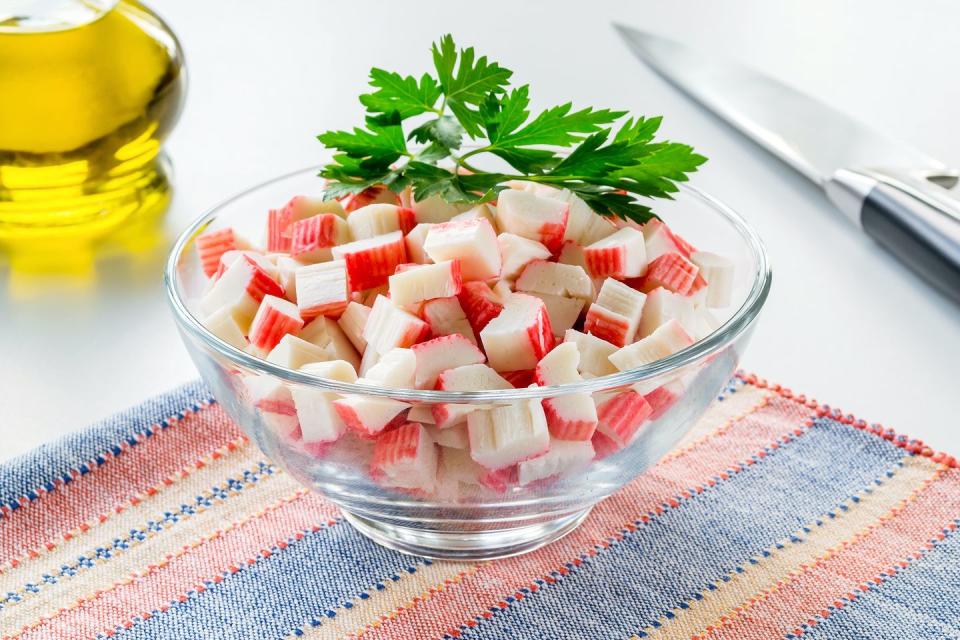What Is Imitation Crab and How Is It Made?
Folks who like to eat California rolls, seafood subs, and packaged seafood salads may be surprised to learn that the "crab" in these popular foods isn't crab at all, but rather, imitation crab—aka krab, crab sticks, crab-flavored seafood, surimi, or kamaboko. Basically, if it's legit crab you're after, the menu or ingredient label will simply state it as such. Price is also a tell-tale sign, as imitation crab tends to be about one-third the price of genuine crab meat, hence its popularity as an affordable stand-in for the real deal. Pick up a package on your next shop and try 'em in Ree Drummond's recipes for crab rangoon nachos or crab dip.

What is imitation crab made of?
The primary ingredient of imitation crab is processed whitefish meat, also known as surimi ("minced fish" in Japanese), a Japanese delicacy invented over 900 years ago. Leftover or extra fish fillets were ground into a paste and used in popular Asian-style foods like fish cakes, then the 1960s introduced additives to surimi, thereby making it possible to extend its refrigerated shelf-life; the surimi industry of today is a booming global one, clocking in at over $3.2 billion. Today's surimi is comprised of mild whitefish like pollack, haddock, and whiting. Common additives used in surimi are sugar, egg whites, salt, starches (like potato, wheat, corn or tapioca) and natural or artificial flavors.
Is eating imitation crab good for you?
With most foods, the processed equivalent has been stripped of the original, whole food's nutritional value—and the same is true for imitation crab. Though both the real and imitation versions are low in calories and fat, the calories in real crab come mostly from protein, whereas the calories in imitation crab come largely from carbs. Real crab is also significantly higher in nutritional value, as it contains omega-3 fatty acids and vitamins and minerals like B12, zinc, and selenium—all of which tends to be washed away during surimi processing.
How does imitation crab taste?
Imitation crab is meant to taste like cooked fresh crab, in both texture and flavor. Efforts to mimic crab extend to the visual, which is why a stick of imitation crab is dyed red on the outside, similar to real cooked crab meat. Though the texture is more processed—a dead giveaway compared to real crab meat—imitation crab tastes undeniably like seafood and is seasoned with the intent of it mimicking crab.

